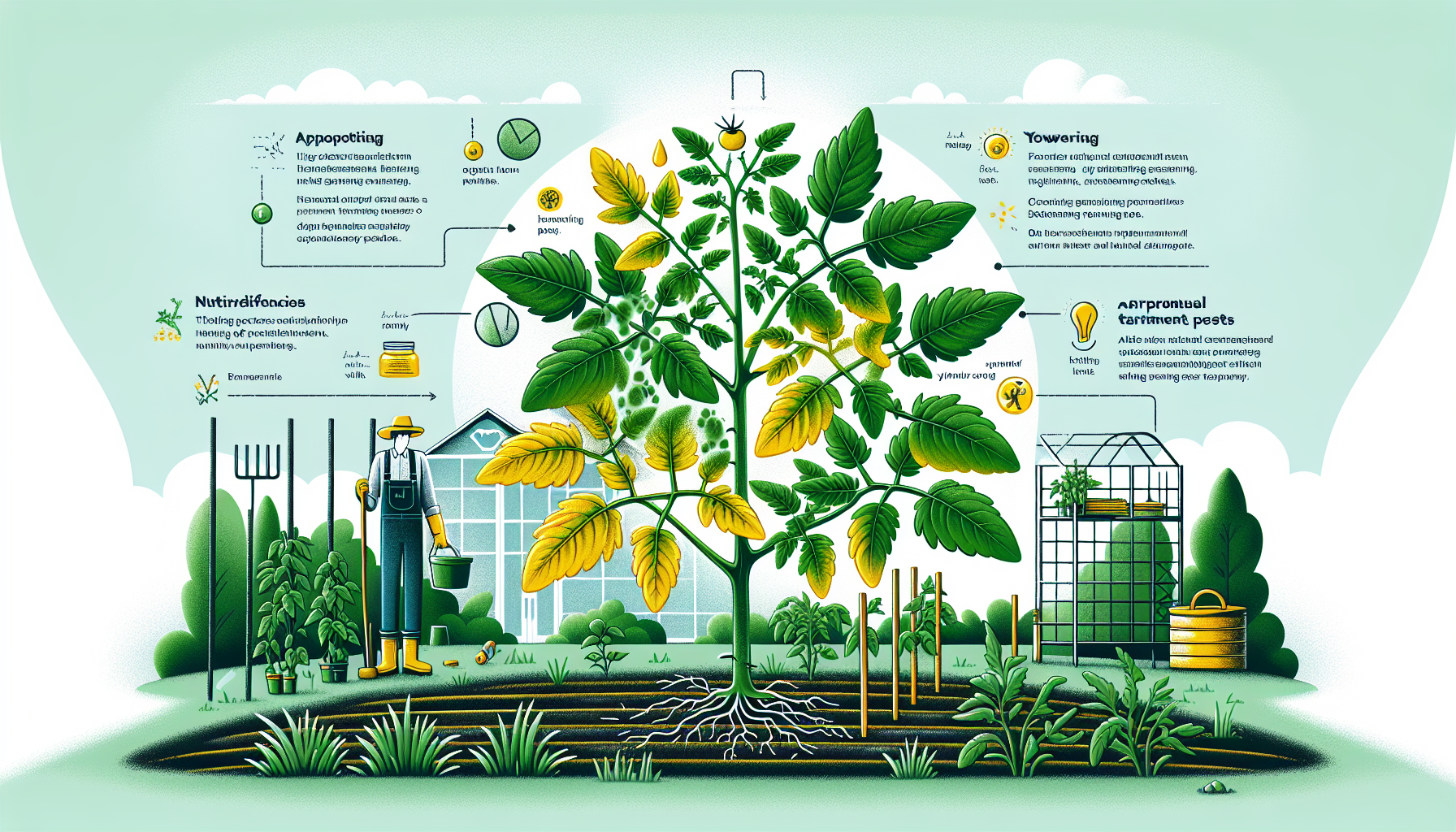
why is my tomato plant turning yellow
Why Is My Tomato Plant Turning Yellow?
Tomato plants are a favorite among gardeners, but they sometimes develop yellow leaves, leaving many wondering what went wrong. Yellowing leaves can be a sign of various issues, ranging from nutrient deficiencies to pests or environmental factors. In this post, we’ll explore the common causes and solutions to help you keep your tomato plants healthy and productive.
1. Nutrient Deficiency
One of the most common reasons for yellowing leaves is a lack of essential nutrients. Tomato plants require nitrogen, potassium, magnesium, and other nutrients to grow and thrive. If your plant lacks these nutrients, its lower leaves may start turning yellow.
Solution: Test your soil using a soil testing kit to identify nutrient deficiencies. Apply a balanced fertilizer or one tailored for tomatoes to replenish nutrients. Organic options like compost or well-rotted manure can also improve soil health.
2. Overwatering or Underwatering
Watering issues are another frequent cause of yellow leaves. Overwatering can lead to root rot and poor nutrient uptake, while underwatering can cause stress to the plant, leading to yellowing.
Solution: Ensure your tomato plant receives consistent moisture. Water deeply but avoid soggy soil. A good rule of thumb is to water when the top inch of soil feels dry to the touch.
3. Pests and Diseases
Tomato plants are susceptible to pests like aphids and spider mites, as well as diseases such as early blight and fusarium wilt. These issues can damage leaves and cause yellowing.
Solution: Inspect your plants regularly for signs of pests or disease. Remove infected leaves and consider using organic pest control methods, such as neem oil or insecticidal soap. For fungal diseases, ensure proper air circulation and avoid overhead watering.
4. Environmental Stress
Extreme temperatures, poor sunlight, or transplant shock can stress your tomato plants, causing their leaves to yellow. Plants may struggle to adapt to sudden changes in their environment.
Solution: Place your tomato plant in a location with full sun (6-8 hours daily). Protect them from temperature extremes with row covers or mulch. When transplanting, handle the roots gently and water immediately to minimize shock.
5. Natural Aging Process
Sometimes, yellowing leaves are simply part of the plant’s natural aging process. Older leaves at the bottom of the plant may yellow and die as the plant focuses its energy on new growth and fruit production.
Solution: Remove any yellowing leaves to improve air circulation and focus energy on healthy growth. This is especially important as the plant matures.
Final Thoughts
Yellow leaves on a tomato plant can be concerning, but identifying the cause is the first step to solving the problem. By providing proper care, monitoring for pests and diseases, and ensuring optimal growing conditions, you can help your tomato plants thrive. Happy gardening!
For more gardening tips and tricks, check out our gardening blog.